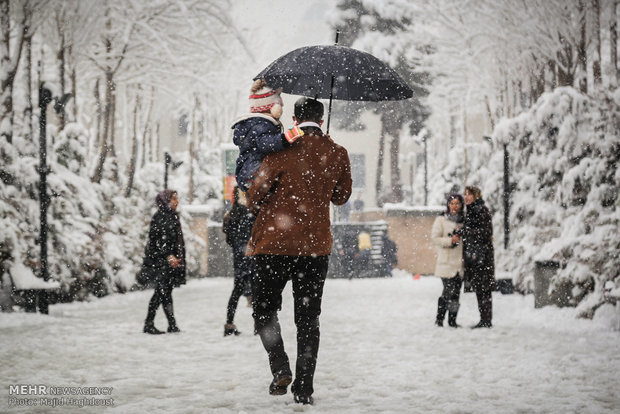Expert predicts 10-day ‘cold spell’ as of Jan. 5 in Iran

TEHRAN – Eminent meteorologist professor Hossein Ardakani told Tasnim news agency that a cold spell will hit the country and heavy snow will start, leaving freezing weather for 10 days on January 5-15.
A very cold weather flows from the Prince Gustav Adolf Sea, a marginal sea of the Arctic Ocean located in Canada, to the north European countries and moves to the central Europe and the Black Sea, and eventually crosses the Eastern Mediterranean region, Ardakani explained.
The cold weather flow will result in snow and rainfalls in all parts of the western, northwestern, eastern and northern provinces of the country, as well as northern and southern Alborz province and Zagros region, except southeastern parts of the country, he added.
“It is anticipated that after the snow falls, the country will experience a temperature of several degrees below absolute zero during a 10-day period called cold spell,” he added.
He further warned that farmers, as well as Road Maintenance & Transportation Organization, would take the necessary measures.
Meanwhile, Ahad Vazifeh, a weatherman with the Iran’s Meteorological Organization (IMO), told IRNA that the anticipation of remaining cold spell and freezing weather in the country is not reliable due to the organization’s forecast.
There is a cold weather flow entering the country on Thursday, which will not cause large amounts of snow, and areas such as the Northwest, the Zagros and Alborz Mountains might receive snowfalls, but not the whole country, he added.
Additionally, the former head of Atmospheric Science and Metrological Research Center Mohammad Taqi Zamanian, said that Ardakani is an experienced meteorological professor, whose predictions are usually accurate.
He went on to say that the IMO usually uses Global Forecast System database, which does not provide long-term forecasts.
“Ardakani also have access to the same information as the Meteorological Organization, but he has been observing and analyzing weather maps and movements of air flows for over 50 years and is surely able to predict the movement of atmospheric systems,” he noted.
In November 2018, Ardakani also forecasted that precipitation will be higher than normal in autumn and winter this year, and the amount of rainfall the country received during autumn, almost quadrupled compared to last year.
In a recent report, IMO highlighted that while above normal precipitation was received in many provinces nationwide over the first two months of autumn, during the last month of autumn and winter, the country’s mean precipitation will meet normal levels.
According to data released on January 1 by the National Drought Warning and Monitoring Center since the beginning of autumn, Iran received 94.1 millimeters of rain on average which quadruples last year’s precipitation rate of 29.6 millimeters, the amount also indicates a rise compared to the long-term average of 70 millimeters.
FB/MQ/MG
Leave a Comment